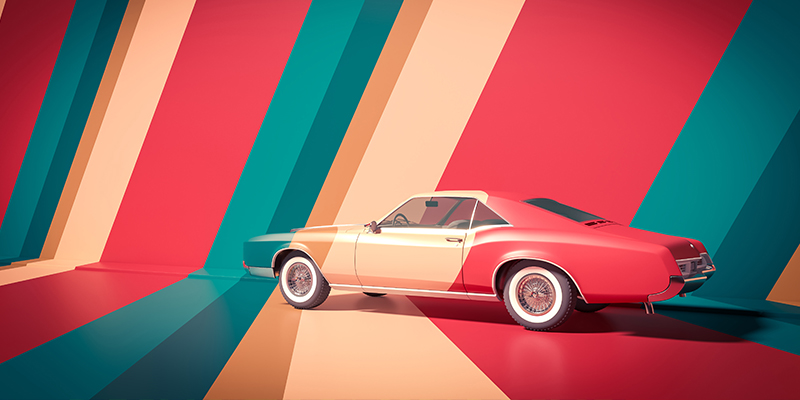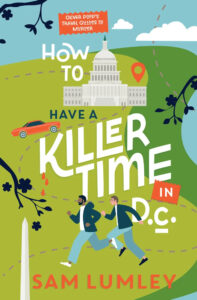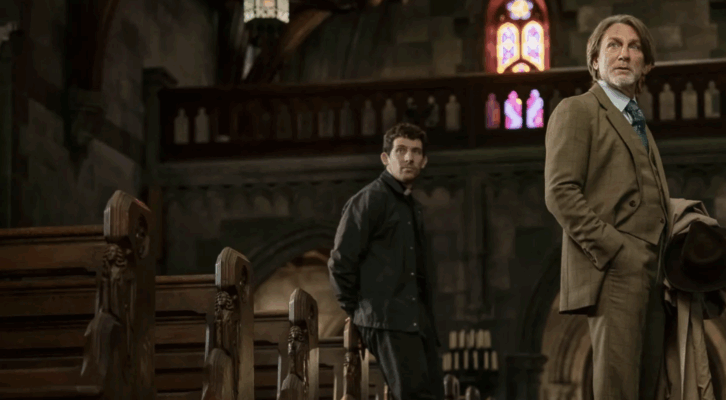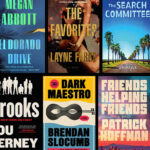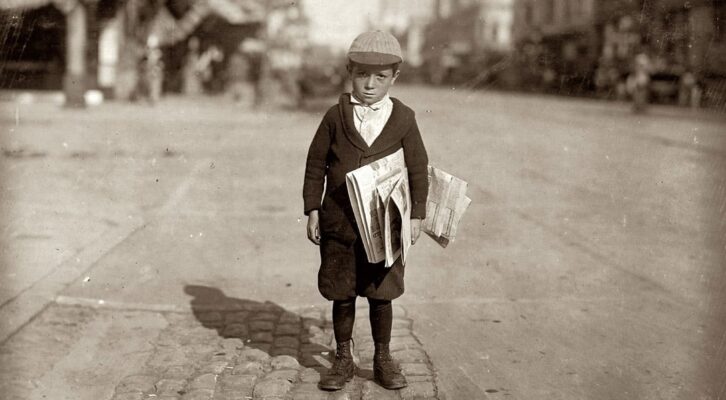If you’ve ever wished that you, too, could write a mystery novel, but don’t feel qualified because you haven’t been hit by some miraculous lightning bolt of inspiration, delivering you a fully-formed mystery and plot and characters, I have good news for you: that’s not how it happens. There’s a painstaking process of assembly before you can even begin to think about writing (doesn’t that sound way more fun than a lightning bolt of inspiration?), that continues as you write, and often even into the editing process, of putting together, piece by piece, who your characters are, what your setting is, what the puzzle pieces of your mystery look like, and how each of those elements inform the others. For example, I’m Autistic, so I knew early in my planning process that I wanted my sleuth to be Autistic, too. But because I’m Autistic, that wasn’t the first element of my story I came up with.
No, before I had anything else, I had the main car for my story in mind.
There’s a classic stereotype that Autistic folks can be a bit obsessive and savant-like, usually about one particular special thing, and while I’ve tried to cultivate myself as a reasonably well-rounded person, I have to admit that I have a thing, and it’s cars. I don’t particularly feel like I chose my thing—I was aware of the differences between Buicks and Oldsmobiles and Chevrolets before I could verbalize them, and this was when Buicks and Oldsmobiles and Chevrolets looked like this—and there are times in my life when I’ve felt a little like a prisoner to it, but these days I mostly lean into it as something that keeps me out of trouble and sometimes gives me something to talk to other people about, which is an area where I’ll take any help I can get.
Besides, within the annals of detective fiction, there have been some memorable cars. And they are a great way to telegraph some insight about who a character is without hitting anybody over the head with it.
A formative one for me was Lt. Columbo’s battered gray Peugeot. Like the fact that he didn’t wear a uniform, or carry a gun, or even ever put anybody in handcuffs, Columbo’s funky French convertible set him well apart from any other cop ever seen on TV. And, like his rumpled raincoat or his unassuming one-eyed squint, it was a calculated key ingredient in getting his opponents to underestimate and dismiss him. But just as Columbo knew and had faith in his own abilities, he took a certain pride in his unusual car, occasionally pointing out how rare it was—likely one of fewer than a hundred Peugeot 403 Cabriolets ever sold in the United States—and making it clear that, despite its scruffy appearance and questionable mechanical integrity, the car was special to him. Once, when asked whether he’d ever considered getting a new car, he replied, “No, you see, I already have two cars. Of course, my wife’s car is nothing special. That’s just for transportation. You understand.”
When TV pioneer Steve Allen lent his name to a series of mystery novels in which he “starred” in the 1980s and ’90s, the choice to have his character chauffeured in a glitzy (and more than a little ridiculous) burgundy 1963 Cadillac limousine was an inspired one. What could be more Hollywood than a stretch limo? But this was a limo that nobody could take seriously, puncturing Hollywood’s pretenses, bringing an appropriately Allenesque element of slapstick to the occasional high-speed chase and underlining the farce of someone like Steve Allen in a car like a chrome slathered, be-finned Cadillac successfully going incognito as a detective. (It’s worth mentioning that Robert Westbrook, reputed to be the uncredited author of most of the Allen mystery novels, also published a series under his own name in which his sleuth, like Columbo an unconventional police detective, similarly bucks protocol by tooling around Beverly Hills on official business in a vintage Austin-Healey roadster.)
Another classic comedic car choice comes to us from Janet Evanovich’s evergreen Stephanie Plum series. While Stephanie’s personal automotive taste has evolved with the times, from her dream Miata whose repossession kicked off the series in the ’90s to the SUV models she’s leaned toward in more recent installments, it’s her constant fallback in her parents’ garage that’s always been her true four-wheeled alter-ego: Uncle Sandor’s powder-blue 1953 Buick. Like the job she fell into at the bail bonds agency when her life fell apart, and somehow can’t bring herself to leave, the Buick is both an albatross and a savior, embarrassing to be seen in but always ready to roll when her latest attempt at a cooler car has been stolen, blown up, or crushed by a flying garbage truck. And like Stephanie herself, the Buick is legendarily indestructible.
A good illustration of the importance of choosing the right set of wheels for your sleuth comes from the adaptation of Leslie Charteris’s The Saint adventure novel series, featuring Simon Templar, to television in 1962. On the page, dating back to the 1930s, Templar had driven a fictional sports car, the Hirondel. When the time came to make the leap to the small screen, the producers had a car casting challenge on their hands, as creating a one-off custom car (and then subjecting it to the abuses of filming for years on end) would likely have been deemed prohibitively expensive, if it was considered at all. Legend has it that the first choice for Simon Templar’s on-screen ride was England’s most exciting new sports car, the Jaguar E-Type. When Jaguar declined to provide a car—being able to sell as many as they could build without weekly TV exposure—the production turned to an unlikely second choice: Volvo. The Swedish automaker was only too happy to provide examples of its sporty P1800 coupe, and a legend was born. I say this was a happy outcome for all involved. The Jaguar, famous as it is for its sexy curves, is equally ripe for parody and could have given the Saint a bit too strong a whiff of louche playboy than what Roger Moore’s debonair portrayal deserved. The Volvo, by contrast, was a left-field choice, neatly mirroring the TV Templar’s adherence to his own moral and ethical codes without regard for convention. Moore, for his part, was pleased with the Volvo, too; he drove his own P1800 off-screen for many years as well.
I could go on with more examples, like the frivolously impractical—and conspicuous—cars that tell us that detectives like Nick and Nora Charles of the Thin Man books and movies, or Maddie Hayes on TV’s Moonlighting, (various Packards and Lincolns, and a BMW 635CSi coupe, respectively) are rich dilettantes, but you get the picture. I can only hope I’ve cast my star car as well as my forebears, though I have to admit that, in the inevitable tinkering that takes place during that jigsaw puzzle process of assembling story and characters, it got demoted to more of a supporting role. It’s being driven by a main character, but not the main character.
Why’s that? Because my main sleuth, who is Autistic but has his own interests separate from mine, follows the example set by such luminaries as Hercule Poirot and Jessica Fletcher: he doesn’t drive.
***

